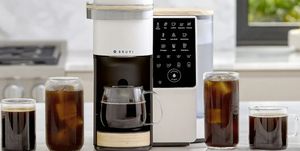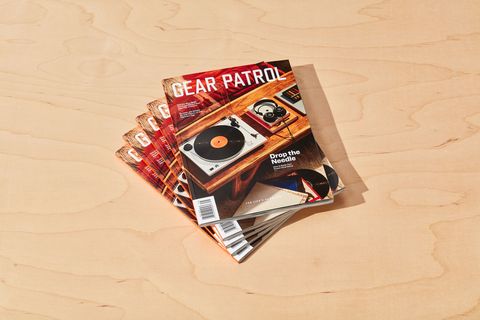I recently moved into a freshly renovated apartment. Within days, I noticed something peculiar. It started with my front door lock, an electric one from Yale. Every time I opened it, the lock let out a cheery little tune as if it were welcoming me home.
Before long, I noticed other jingles emanating from various objects. The Whirlpool oven would play a little melody when it was done preheating. The GE dryer would sing to let me know my load was finished. As I filled out my new space with additional appliances, the serenading intensified.
My Bruvi coffee maker sang when a brew was ready or it was out of water; my Roomba robot vacuum and mop had specific tones for starting jobs and even getting stuck. It seemed like everything in my place was chirping about one thing or another. What the hell was going on?
No, I had not accidentally moved into that house from Beauty and the Beast — it’s a certifiable trend.
"Marketers have started to rely more on audio cues in addition to visual cues to connect with customers, says Michael R. Solomon, professor of marketing at Saint Joseph’s University’s Haub School of Business and author of Consumer Behavior: Buying, Having, and Being. This phenomenon is known as “sonic branding,” and it’s another tactic companies use to get you to build a relationship with their products.
As novel as it may seem, it’s just new to the West. Appliances have been singing in other parts of the world before the dawn of the millennium, with Japanese appliance manufacturer Zojirushi incorporating chimes in their rice cookers as early as 1999. The sounds not only helped the brand stand out in the sea of standard beeps made by competitors’ products, but also it showcased the capabilities of then-new microcomputer tech, as programming the tones wasn’t possible before.
Like Zojirushi, the consumer electronics brands filling American homes with song today are doing so for both emotional and practical reasons.
"Roomba sounds are intended to convey a sense of warmth, intelligence and approachability, while also instilling confidence that the robot is capable and prepared to do its job," explains Brent Hild, director of product management at iRobot, the manufacturer of Roomba vacuums. "The sounds a Roomba makes are as important as the physical design. However, they must strike a balance between being helpful and informative without being loud, bothersome and repetitive."
Toward that end, companies enlist teams of branding experts, sound designers and industrial engineers to nail down the right blend of dulcet tones.
"We take into careful consideration contexts like environment, user goals and the emotional triggers that sound can elicit or imply to shape the audio user experience," says Jess Drake, principal user interface designer at GE Appliances. "Our team takes that a step further by allowing our brand attributes to inform the audio personality of our products. The design team aims for a comprehensive approach that blends UX best practices with audio branding for a distinctive and expressive soundscape."
Product sounds also figure into the larger image that brands want to present to their customers. When Yale, a 180-year-old door lock maker, underwent a recent rebrand to better represent its modern smart lock offerings, the team prioritized sound, working with consumers to develop a unique tone they could use across their marketing efforts and in the products themselves.
"Beta testers provided feedback on the sounds they heard from the lock," says Tiffany Mayo, senior product manager at Yale. "This was used to help validate that the sounds [chosen] have a pleasing tone to our potential customers."
As brands continue to search for ways to cut through the proverbial noise and connect with customers, we can only expect more appliance acoustics.
"It’s common for people to anthropomorphize inanimate objects to make them less intimidating and more like a 'friend' than a machine," Solomon notes. "As we increasingly interact with robots and other automated systems, we will need to find ways to personalize these relationships."
In some cases, that’s already happening. "Customers tell us that the cheerful, 'can-do' sounds their Roomba makes add a bit of 'personality' to the robot," Hild says. "It’s no wonder that a majority of Roomba owners also name their Roomba."
My new apartment is coming together, but I haven’t gone that far yet. After all, I wouldn’t want the other appliances to get their feelings hurt.




















